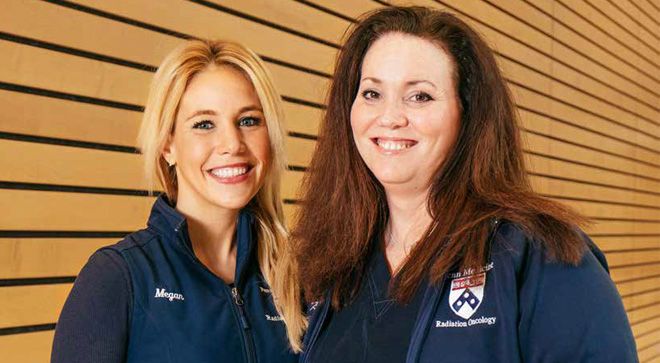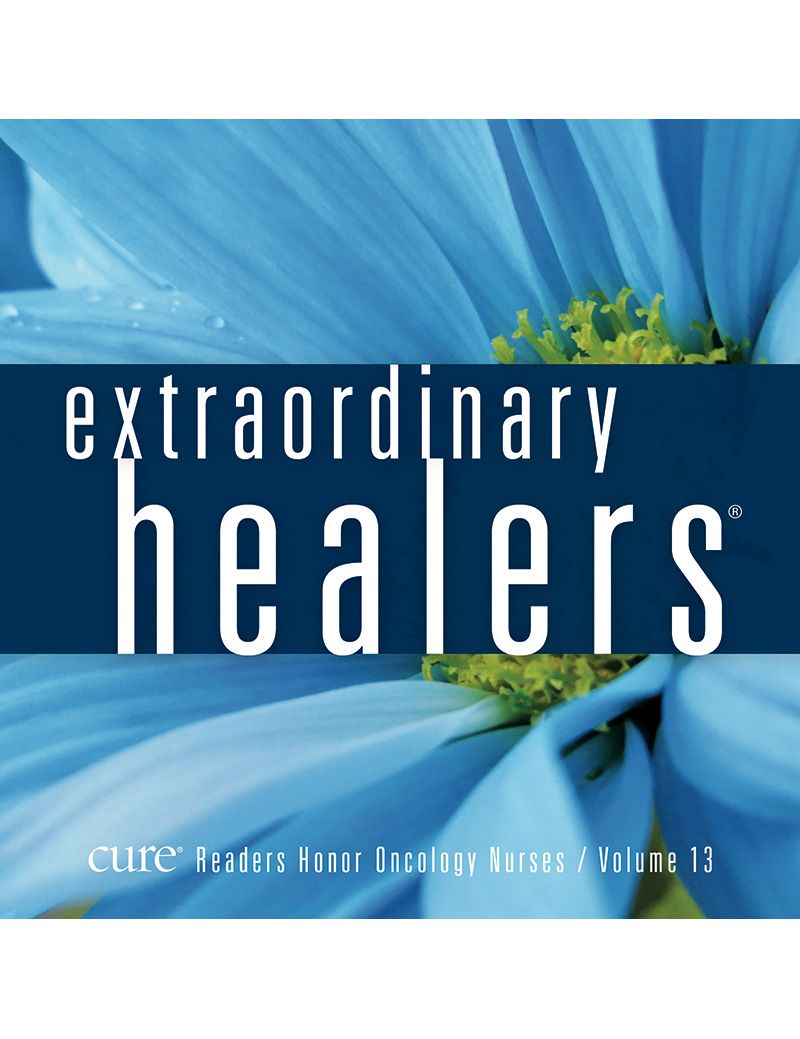A Dynamic Problem Solver
This essay, written by oncology nurse Karen Leary, Ruth & Raymond Perelman Center for Advanced Medicine, nominates fellow registered nurse and colleague Megan Lackaye for CURE®’s 2019 Extraordinary Healer® Award.
I am nominating Megan Lackaye, B.S.N., RN, for this award because of how much she inspires me. I have been an oncology nurse for over 25 years, almost as long as Megan has been alive, and I have never worked with such a dynamo. Megan came to our radiation oncology department at Penn Medicine just a few years ago, yet she has had such an impact on how we care for our oncology patients. She is one of the most organized and thorough nurses I have had the pleasure of working with, and her astute assessment skills are second to none. She is a tech-savvy, outside-the-box problem-solver who seems to have an endless supply of energy combined with a smile that can light up a room. Since she came to our department, she has become a very valued member of our central nervous system site team, caring for adult patients who have received diagnoses of cancers of the brain and spinal cord. She also cares for pediatric patients who are battling cancers of the brain and/or spinal cord or undergoing bone marrow transplants to treat hematologic malignancies.

From left: Megan Lackaye, B.S.N., RN, and Karen Leary, M.S.N., RN, OCN. Photos by Konnor J Durante.
Caring for families who are battling cancer is never easy, but it always makes you feel grateful, honored, blessed and privileged. In my opinion, patients with cancer and their families are the best and most amazing people on this planet. We feel so lucky every day to be a part of this difficult journey, hoping that in some small way we can make it a little easier for them.
In her time in radiation oncology, Megan has helped organize and standardize our patient education materials. She continues to find ways to streamline and improve communication between team members. She is the first nurse in our department to pilot our newest project, telemedicine, using technology that allows the nurse to see and hear patients and provide follow-up care that eliminates the need for them to travel to Penn Medicine to see a member of their health care team. The telemedicine calls take place a week after a patient has completed radiation, so nurses can do an assessment to make sure they are not having issues that would delay or interfere with recovery.
These are just a few of the initiatives and projects that Megan has been involved with; however, the biggest reason I feel Megan is a perfect candidate for the Extraordinary Healer® Award involves something she did for one of her patients. She truly went above and beyond for one very special young man.
J.L. was a 22-year-old gentleman who came to us requiring radiation therapy to treat an ependymoma in his temporal lobe. He had already undergone a craniotomy to resect the tumor, but he also needed radiation to ensure that any remaining cancer cells would be destroyed. J.L. and his family spoke Korean only, so they required translators to help them understand all that was going on. What made this young man extra special was that he also had autism and attention deficit hyperactivity disorder, known as ADHD. Patients undergoing radiation to the brain are required to have an immobilization device made. This form-fitting plastic mask fits over the face and is bolted to the treatment table as patients receive radiation treatments from Monday through Friday for six to seven weeks. This is a major challenge for all patients and much more so for someone with J.L.’s special needs. It was decided that he would get general anesthesia for each of his 30-plus treatments. This was extremely stressful for J.L. and his family and required a tremendous amount of coordination by a multitude of departments and groups throughout the hospital.
Megan monitored J.L. very closely and began to feel that he might be able to get through his treatments without the anesthesia. She took extra time to work with the interpreter, family, radiation therapists, anesthesiologists and managers to arrange a trial run. She spent a great deal of time with J.L., explaining and showing him all the monitoring equipment, the mask and the treatment room so that he would understand and not be afraid. The trial run was successful, and J.L. completed the remaining weeks of his treatment without needing general anesthesia, which made his family relieved and happy and J.L. incredibly proud. This example of dedication and patient advocacy demonstrates Megan’s worthiness for this award. I know she will continue to amaze and inspire all the nurses in our department!
